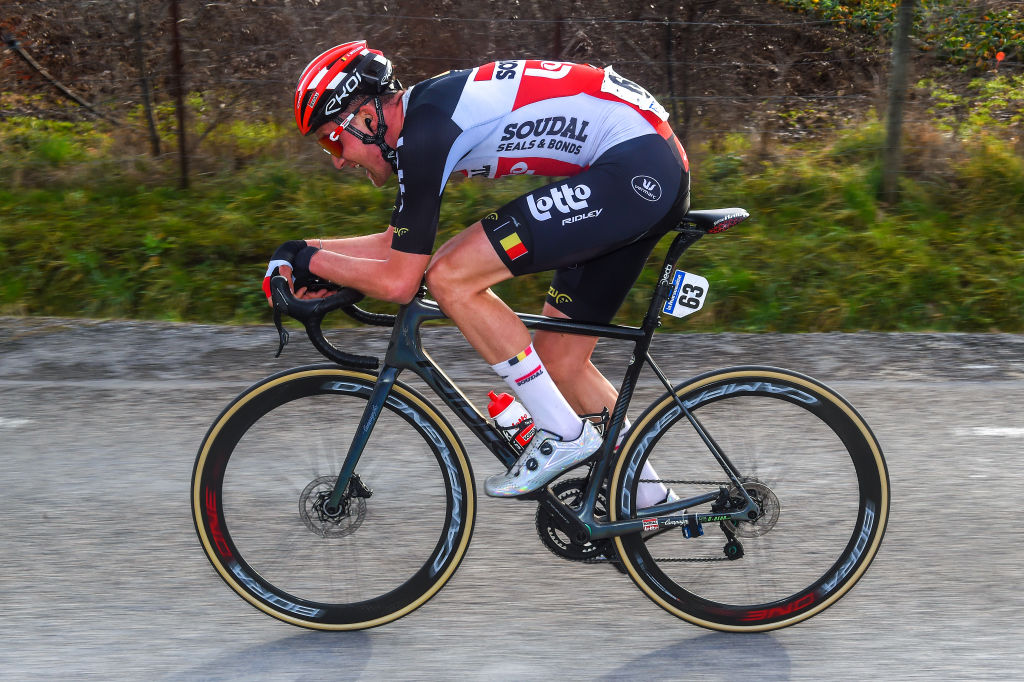UCI bans forearms-on-bars aero position, adds penalties for littering
New rules likely to further anger peloton after ban of 'super-tuck' position

After banning the so-called 'super-tuck' position, the UCI is likely to anger riders in the professional peloton even further with a series of other new rules and punishments, including banning the forearms-on-bars aerodynamic position commonly used in breakaways.
In an update to the UCI rules, the sport's governing body also confirmed that riders could be fined, docked ranking points and penalised time if they throw objects such as bidons and waste in a careless or dangerous manner or outside of new litter zones.
In stage races, a first infringement of throwing waste can be punished with a 30-second penalty, a second infringement with a two-minute penalty, while a third infringement could lead to disqualification.
The new rules will come into force on April 1.
Riders complained against the ban on the ‘super-tuck’ position in the last few days and are likely to push back against the punishment for littering and for using the aero-bar position.
Tim Wellens (Lotto-Soudal) successfully used the position while attacking alone to win stage 3 of the Étoile de Bessèges, gaining enough time to set up the overall victory.
The UCI announced the banning of the ‘super-tuck' position last Thursday and updated its rules on Monday, saying: "Riders must observe the standard position as defined by article 1.3.008. Sitting on the bicycle’s top tube is prohibited. Furthermore, using the forearms as a point of support on the handlebar is prohibited except in time trials."
Get The Leadout Newsletter
The latest race content, interviews, features, reviews and expert buying guides, direct to your inbox!
Article 1.3.008 states: "The rider shall normally assume a sitting position on the bicycle. This position requires that the only points of support are the following: the feet on the pedals, the hands on the handlebars and the seat on the saddle."
Veteran Belgian rider Iljo Keisse of Deceuninck-QuickStep was one of the first to react about the new rules on the position, tweeting: "We will decide for ourselves how we cycle and descend. At the UCI they should first make sure that everything within their responsibility is in order…"
Barriers and litter zones
Riders have traditionally thrown empty bidons towards fans or away from the peloton and dropped litter after eating food or a gel. However, littering has been criticized in recent years, with some riders opting to keep their waste in their pockets to respect the environment.
Now, race organisers have to increase the number of litter drop zones, placing them "every 30-40 kilometres throughout the route of the event or stage," with a final litter zone near the finish.
The UCI also tightened its rules on roadside barriers in the updated document, specifying that "a zone of at least 300 metres before and 100 metres after the finishing line shall be protected by barriers."
Riders called for better barriers and improved safety measures after the horrific crash of Fabio Jakobsen in the 2020 Tour de Pologne.
Last week, the UCI said roadside barriers for the finishes of races will get standard regulations in 2022 after the UCI draws them up in consultation with stakeholders.
The UCI has now banned the use of lightweight, plastic barriers and confirmed that the newly created figure of event safety manager shall "pay special attention to the final section of the race route, and the final hundredth meters before the finish in particular and shall ensure that the safety conditions are observed. This is especially important for events likely to finish in bunch sprints."

Stephen is one of the most experienced member of the Cyclingnews team, having reported on professional cycling since 1994. He has been Head of News at Cyclingnews since 2022, before which he held the position of European editor since 2012 and previously worked for Reuters, Shift Active Media, and CyclingWeekly, among other publications.